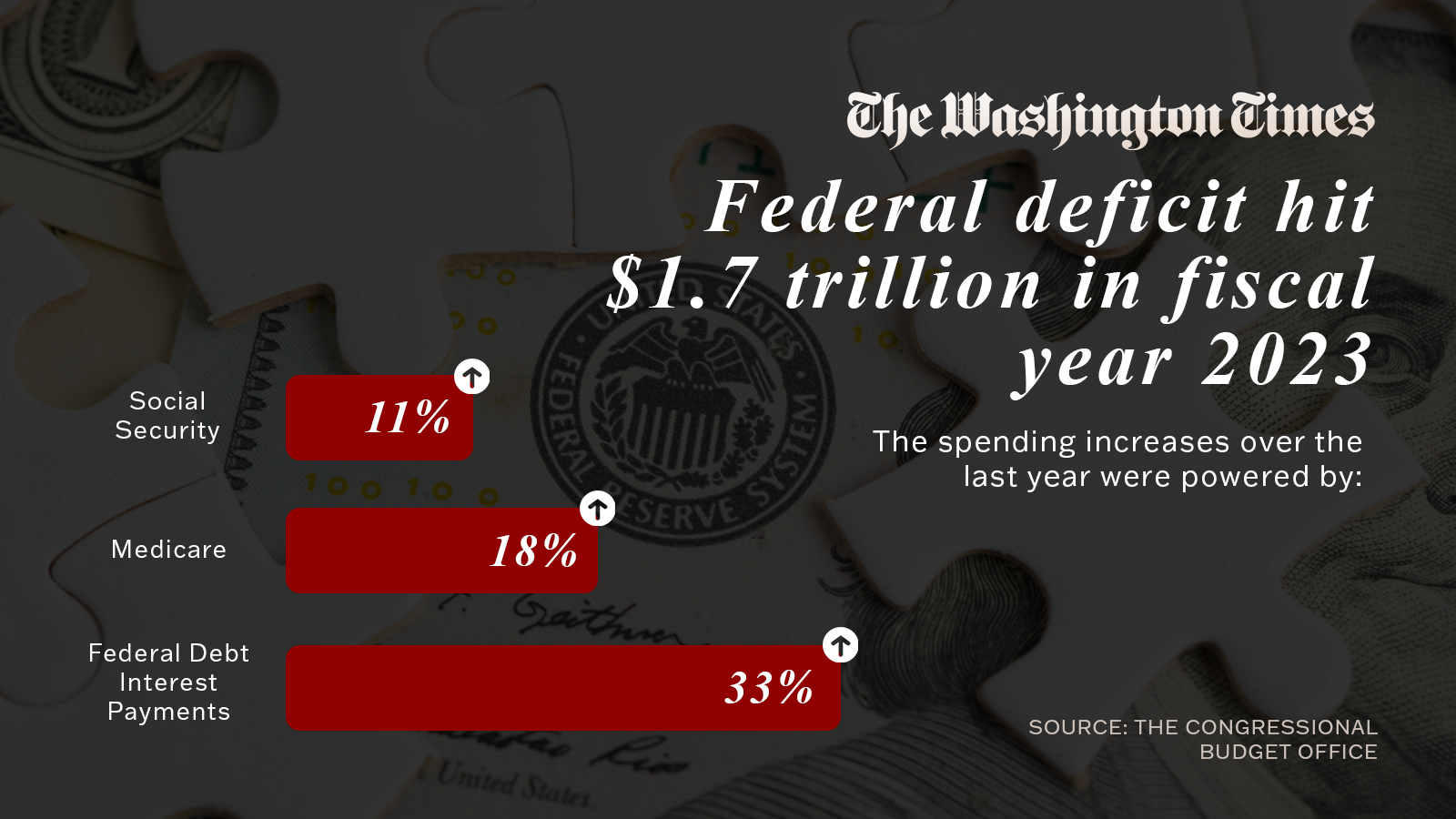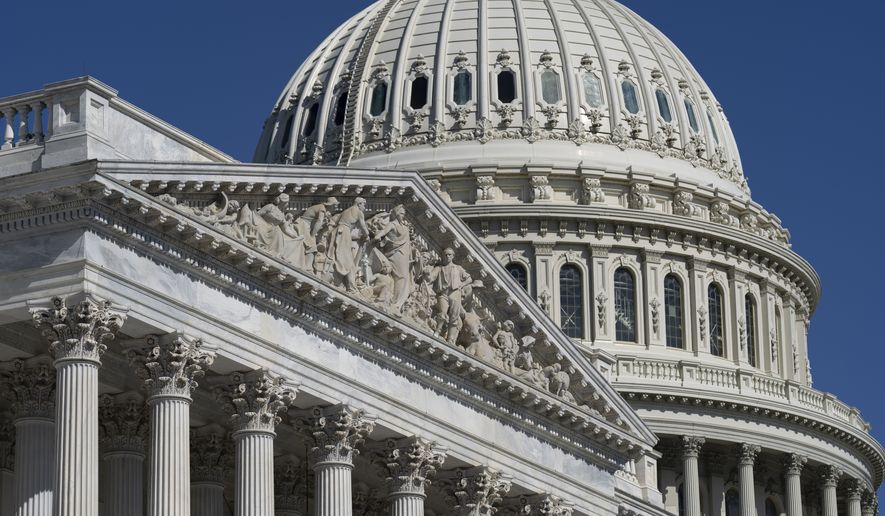A version of this story appeared in the On Background newsletter from The Washington Times. Click here to receive On Background delivered directly to your inbox each Friday.
Uncle Sam ran a deficit of nearly $1.7 trillion in the just-concluded fiscal year, the Congressional Budget Office said Tuesday, pointing to higher spending and lower revenue as the culprits for an increasingly grim fiscal picture.
The Treasury Department will announce the exact final tally later, but CBO’s preview makes clear there’s little good news for President Biden on the fiscal front, as he’s overseen a deficit that was poised to shrink but instead ballooned to the third-worst on record.
CBO said the deficit was $1.69 trillion for the 12 months that began Oct. 1, 2022 and ended Sept. 30.
And it would have been even worse — at $2 trillion — but for the Supreme Court’s ruling in June invalidating Mr. Biden’s massive student loan forgiveness plan. CBO said the government ended up crediting more than $300 billion in savings because of money it can no longer spend on Mr. Biden’s vision.
The spending increases over the last year were powered by Social Security, which grew by 11%; Medicare, which grew by 18%; and interest payments on the massive federal debt. Those interest payments grew last year by 33%, or $177 billion, as the Fed has hiked interest rates to fight inflation.

Bank bailouts also cost the government $101 billion.
The biggest budget surprise lay on the revenue side, where analysts remain mystified by a drop in capital gains and other income tax collections.
Payroll withholding revenue grew, suggesting the surprisingly resilient labor market, but non-withheld tax payments dropped by nearly $300 billion.
“One factor may be smaller collections of taxes on capital gains, which were unusually high in 2022,” CBO said. “In addition, payments from taxpayers in areas affected by natural disasters may have been delayed because the IRS postponed some filing deadlines; most of those payments are now due in mid-October.”
CBO said the exact totals for the year were revenue of $4.441 trillion and spending of $6.131 trillion, producing a $1.69 trillion deficit.
The largest deficits on record by dollar amount were $3.1 trillion in 2020 and $2.8 trillion in 2021. Both years saw massive pandemic-related spending, coupled with economic headwinds from shutdown orders.
Last year saw a major improvement as pandemic spending waned and tax revenue surged.
The final 2022 deficit was $1.376 trillion, though that figure would have been closer to $900 billion without Mr. Biden’s student loan program, which recorded nearly $400 billion in student loan write-offs.
That means the deficit, once the student loan situation is disregarded, more than doubled between last year and this year.
• Stephen Dinan can be reached at sdinan@washingtontimes.com.




Please read our comment policy before commenting.